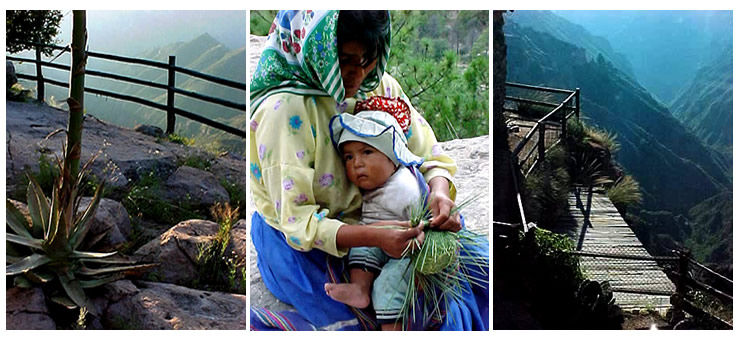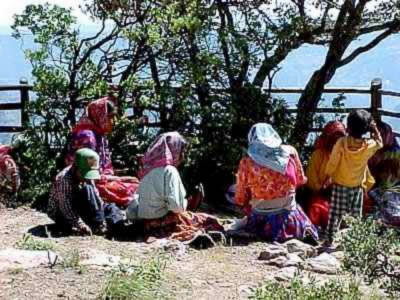Years ago, we made a three-day trip into the Copper Canyon (Barrancas del Cobre) on the Chihuahua to Pacific railway in northern Mexico. Watching a recent video (below) on YouTube brought back recollections of the trip and made me want to experience again the majesty of those canyons in northern Mexico. The video gives a very good feel for what the train ride itself was for us.
We traveled into the canyons from the west rather than from the east, starting out at El Fuerte, Sinaloa, where we overnighted and left our vehicle. We boarded the train to Chihuahua in the early morning and found it only slightly more crowded than the one in the video–plenty of room to stretch out, move around, and take photos from the platforms between cars. Most of our time, in fact, was spent on those platforms with the wind in our faces. It was summer time–rainy season–so tourism was light, and we didn’t bother to make reservations ahead of time. We played it all by ear.
The first hours of our journey through the flatlands of the coast were a little monotonous, but soon we hit foothills, crossed rivers, and began climbing into valleys whose walls slowly moved inwards, as if we were being forced through a protected gate into some kind of primeval land reluctant to give up its secrets, which, in a sense, we were The vegetation changed. The trees became denser, and we could identify occasional small orchards of fruit trees–mainly apples–alongside the tracks.
The railway itself was a astounding piece of engineering. How many people must have been broken and left along the wayside in its construction. And yet it opened up a wonder of incredible landscapes, of dizzying heights overlooking purple-shaded ravines whose carvers–the rivers–looked like mere threads of silver at the bottoms of the precipices. The railway goes over countless bridges, through dozens of tunnels (one a full mile long), and scales thousands of feet through rugged terrain where no roads have yet been built.
The railway is a gateway to the seven canyons region in the state of Chihuahua, a system more extensive and deeper than the Grand Canyon in the United States. It is the territory of the Raramuri indians, also called the Tarahumara, known for their speed and endurance in distance and altitude running.

On this, our first day of Chepe travel, we passed by the stations of Bahuichivo and Posada Barrancas before jumping off the train in the middle of the afternoon at Divisidero, the approximate halfway point to Chihuahua and the highest elevation on the railway. We were at the height of the canyons, surrounded by spectacular vistas and crisp, clean air, and thought it a good place to explore for the afternoon before heading back down on the coast-bound train the next day. We didn’t have enough time to do the whole route, so this was the next-best thing.
We took a room at the Hotel Divisidero Barrancas, a cliffhanger if we ever saw one, where we hooked up with another visitor from Europe to take a quick afternoon walking tour up onto the crags above the hotel. We watched the afternoon sun play shadow games with the mountains and canyons. We visited Raramuri cliffside dwellings, heard the plaintive sounds of their handmade violins, and looked out over a world of crinkled cliffs and valleys we had never seen before.
I’ll continue with the remainder of our Copper Canyon adventure and more photos in my next post.
For more information on El Chepe, the Chihuahua-Pacific railroad of Mexico, visit http://www.chepe.com.mx/
